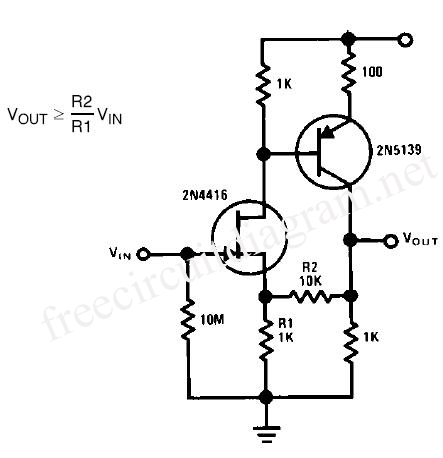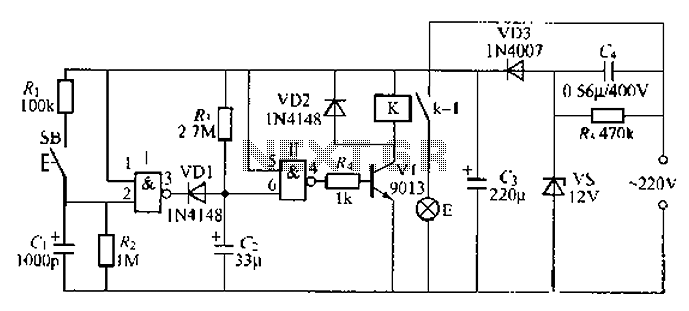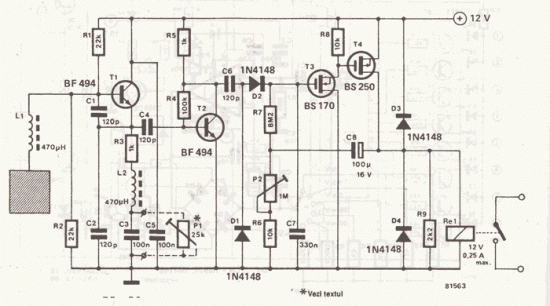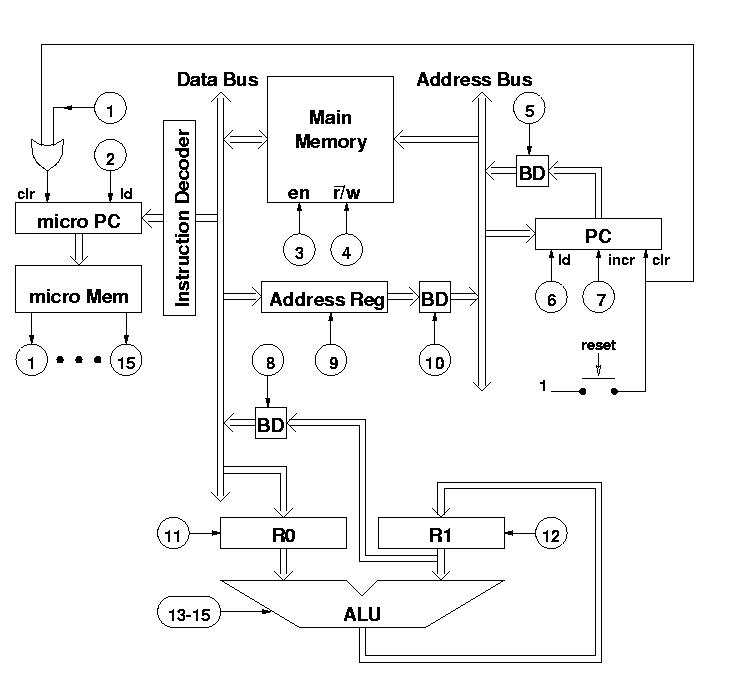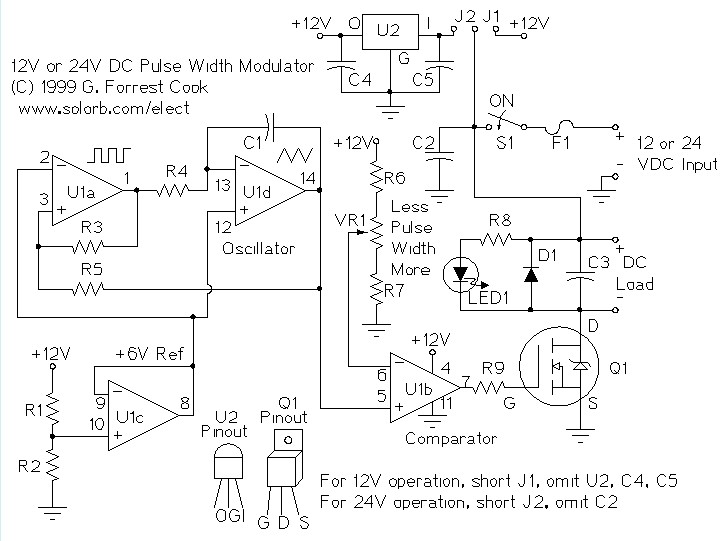
LED display control circuit diagram of a counter
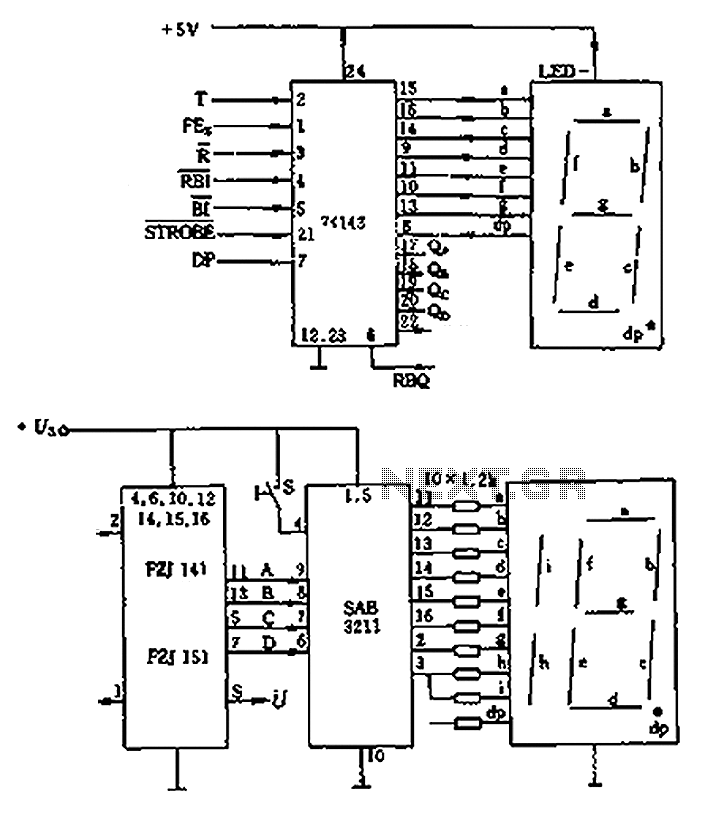
The decimal seven-segment storage decoding drive unit 74HC143 provides a constant output for all segments, each at a voltage of 5V and a current ranging from approximately 15mA to 22mA. The BCD data for the seven-segment decoder can be accessed from pins 17 to 20, with pin 22 used for a carry signal, which indicates that when the count value reaches 9, the output goes low while the carry remains high. This carry signal can be utilized to control a counter. Additionally, a circuit for controlling a one or one-and-a-half-digit seven-segment LED display is illustrated. The SAB3211 serves as a 4-bit binary counter and may be used in conjunction with either the FZJ151 binary counter or the FZJ141 decimal counter. The supply voltage for this configuration ranges from 9V to 16V.
The 74HC143 is a versatile integrated circuit designed for driving seven-segment displays, commonly utilized in digital displays and counters. It features a BCD (Binary-Coded Decimal) to seven-segment decoder function, which allows it to convert binary input signals into a format suitable for driving the display. The output segments are energized at a steady voltage of 5V, ensuring consistent brightness across all segments, which is critical for visibility in various lighting conditions.
The current output capability of 15mA to 22mA per segment is sufficient for driving standard LED displays, enabling clear and bright representation of numeric characters. The BCD inputs, located at pins 17 to 20, accept binary signals that correspond to decimal digits from 0 to 9. The carry output at pin 22 provides a useful feature for cascading multiple counters or for synchronizing with additional logic circuits. When the count reaches 9, the carry output transitions to a high state, which can be employed to trigger subsequent counting operations or to reset the display.
For applications requiring display control, a circuit diagram is provided that illustrates the integration of the 74HC143 with a one or one-and-a-half-digit seven-segment LED display. This setup is particularly useful in applications where limited digit display is required, such as in simple counters or measurement devices.
The SAB3211, functioning as a 4-bit binary counter, can be interfaced with the 74HC143 to enhance counting capabilities. It is compatible with both the FZJ151 binary counter for binary applications and the FZJ141 decimal counter for decimal counting tasks. The operating voltage range of 9V to 16V allows for flexibility in power supply options, making the circuit adaptable to various electronic environments.
In summary, the 74HC143 and its associated components form a robust solution for driving seven-segment displays in a variety of counting and display applications, providing reliable performance and ease of integration into larger electronic systems. As shown, in FIG a decimal seven storage - Decoding - drive unit 74 143, this unit has a constant output for all segments. Each at a voltage of 5V when the current is about 15 ~ 22mA. Seven segment decoder BCD data can be removed from the 17 to 20 feet. 22 feet for a carry, that is, when the count value to 9 after the low, remaining high. Using this signal can control a counter. Figure b for controlling one or 1 1/2 digit seven-segment LED display circuit. SAB3211 as 4-bit binary counting. It may be needed before the next binary counter (FZJ151) or decimal counter (FZJ141). Supply voltage 9 ~ 16V.
The 74HC143 is a versatile integrated circuit designed for driving seven-segment displays, commonly utilized in digital displays and counters. It features a BCD (Binary-Coded Decimal) to seven-segment decoder function, which allows it to convert binary input signals into a format suitable for driving the display. The output segments are energized at a steady voltage of 5V, ensuring consistent brightness across all segments, which is critical for visibility in various lighting conditions.
The current output capability of 15mA to 22mA per segment is sufficient for driving standard LED displays, enabling clear and bright representation of numeric characters. The BCD inputs, located at pins 17 to 20, accept binary signals that correspond to decimal digits from 0 to 9. The carry output at pin 22 provides a useful feature for cascading multiple counters or for synchronizing with additional logic circuits. When the count reaches 9, the carry output transitions to a high state, which can be employed to trigger subsequent counting operations or to reset the display.
For applications requiring display control, a circuit diagram is provided that illustrates the integration of the 74HC143 with a one or one-and-a-half-digit seven-segment LED display. This setup is particularly useful in applications where limited digit display is required, such as in simple counters or measurement devices.
The SAB3211, functioning as a 4-bit binary counter, can be interfaced with the 74HC143 to enhance counting capabilities. It is compatible with both the FZJ151 binary counter for binary applications and the FZJ141 decimal counter for decimal counting tasks. The operating voltage range of 9V to 16V allows for flexibility in power supply options, making the circuit adaptable to various electronic environments.
In summary, the 74HC143 and its associated components form a robust solution for driving seven-segment displays in a variety of counting and display applications, providing reliable performance and ease of integration into larger electronic systems. As shown, in FIG a decimal seven storage - Decoding - drive unit 74 143, this unit has a constant output for all segments. Each at a voltage of 5V when the current is about 15 ~ 22mA. Seven segment decoder BCD data can be removed from the 17 to 20 feet. 22 feet for a carry, that is, when the count value to 9 after the low, remaining high. Using this signal can control a counter. Figure b for controlling one or 1 1/2 digit seven-segment LED display circuit. SAB3211 as 4-bit binary counting. It may be needed before the next binary counter (FZJ151) or decimal counter (FZJ141). Supply voltage 9 ~ 16V.
